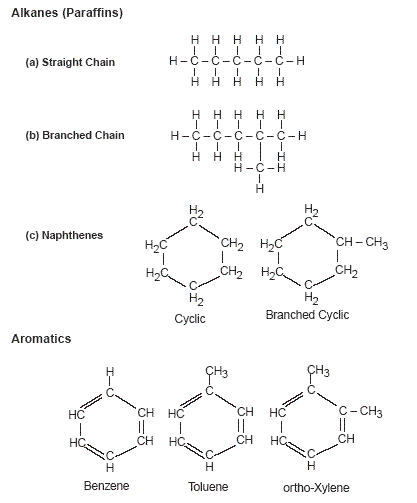Agency for Toxic Substances and Disease Registry
Stoddard Solvent Toxicity
Exposure Pathways
"Stoddard Solvent" is the name adopted by the National Association of Dryers and Cleaners to honor W.J. Stoddard for his work with petroleum distillates used in the dry-cleaning industry. Stoddard solvent is a distillation fraction of crude petroleum (distilling between about 300°F [149°C] and 400°F [204°C]) that contains at least 200 products, predominantly C7 through C12 hydrocarbons. The mixture typically consists of 30 to 50% straight-chain and branched-chain alkanes (paraffins), 30 to 40% cycloalkanes (naphthenes), and 10 to 20% aromatic hydrocarbons.
(Benzene, toluene, and xylene each represent less than 1% of the total mixture [Figure 1].) Although the toxicity of Stoddard solvent is not attributable to any one type of constituent, the aromatic components are considered to be more toxic than the paraffin or naphthene components.
Stoddard solvent is a colorless, flammable liquid that is insoluble in water. It is volatile and has an odor similar to that of kerosene or gasoline. This description applies to a variety of other petroleum distillates including white spirits and mineral spirits, which are similar mixtures containing the same types of components as Stoddard solvent. However, the boiling ranges and ratios of hydrocarbon components of these three petroleum distillate fractions differ. Trade names for Stoddard solvent include Texsolve S and Varsol.

Figure 1. Structure of Major Components of Stoddard Solvent
Stoddard solvent is a multipurpose solvent used in industry primarily as a dry-cleaning solvent and a metal degreaser. Stoddard solvent is also used industrially as a thinning agent for paints, coatings, and waxes, and as a solvent for printing inks, photocopier toners, adhesives, rubber products, waxes, polishes, and pesticides.
Consumers may be exposed to Stoddard solvent through inhalation or dermal contact with cleaning products, paints, paint thinners, furniture refinishers, or pesticides. Stoddard solvent can also contaminate water and soil through industrial, consumer, or hazardous waste landfill discharges. Although the paraffin components of Stoddard solvent have low water solubility, they can adsorb to particles, and small amounts of these components may be ingested with suspended particulates in contaminated drinking water. The aromatic components of Stoddard solvent are generally more water soluble and may reach the groundwater. Both aliphatic and aromatic components rapidly undergo biodegradation by soil microorganisms, although total degradation may take years.
Previous Section Next Section
|